1930s Maple Furniture
Mid-20th Century American Art Deco Side Tables
Ebony, Maple
Vintage 1930s American Art Deco Coffee and Cocktail Tables
Maple
Vintage 1930s British Art Deco Commodes and Chests of Drawers
Wood, Oak
Vintage 1930s American American Colonial Armchairs
Hardwood, Maple
Vintage 1930s American American Colonial Rocking Chairs
Maple
Vintage 1930s British Chinoiserie Mantel Clocks
Lacquer
Vintage 1930s British Queen Anne Floor Mirrors and Full-Length Mirrors
Lacquer
Vintage 1930s English Chinoiserie Floor Lamps
Lacquer
Vintage 1930s English Chinoiserie Floor Lamps
Lacquer
Vintage 1930s Italian Art Deco Coffee and Cocktail Tables
Brass
Vintage 1930s British Queen Anne Cabinets
Walnut, Lacquer
Vintage 1930s Italian Art Deco Sideboards
Brass
Vintage 1930s British Art Deco Nesting Tables and Stacking Tables
Wood, Maple, Burl
Vintage 1930s American Art Deco Dressers
Aluminum
Vintage 1930s British Art Deco Side Tables
Walnut
Vintage 1930s English Art Deco Sideboards
Glass, Bakelite, Birdseye Maple, Mahogany
Vintage 1930s Italian Art Deco Beds and Bed Frames
Brass
Mid-20th Century English Art Deco Beds and Bed Frames
Bakelite, Maple
Vintage 1930s Italian Art Deco Chairs
Maple, Parchment Paper
Vintage 1930s Italian Art Deco Tables
Maple, Parchment Paper
Vintage 1930s French Art Deco Vanities
Maple, Mirror
Vintage 1930s American Art Deco Wall Mirrors
Wood, Burl
Mid-20th Century English Art Deco Beds and Bed Frames
Bakelite, Maple
Vintage 1930s French Art Deco Credenzas
Brass
Vintage 1930s Italian Art Deco Stools
Leather, Maple, Elm
Vintage 1930s Austrian Art Deco Table Lamps
Birdseye Maple, Maple
Vintage 1930s Italian Art Deco Sideboards
Brass
Vintage 1930s French Art Deco Sofa Tables
Macassar
Vintage 1930s Italian Art Deco Sideboards
Mirror, Maple, Walnut
Vintage 1930s Austrian Art Deco Night Stands
Maple, Plywood
Mid-20th Century Cabinets
Birdseye Maple
Vintage 1930s Czech Art Deco More Mirrors
Wood, Fabric, Upholstery, Beech, Maple
Vintage 1930s Italian Art Deco Cabinets
Brass
Vintage 1930s Italian Art Deco Coffee and Cocktail Tables
Brass, Nickel
Vintage 1930s Czech Art Deco More Mirrors
Maple, Walnut
Vintage 1930s American Mid-Century Modern Chairs
Maple
Early 20th Century French Art Deco Commodes and Chests of Drawers
Brass
Vintage 1930s Czech Art Deco Secretaires
Glass, Wood, Lacquer, Ebony, Maple
Vintage 1930s American Art Deco Dining Room Chairs
Leather, Wood, Maple
Mid-20th Century English Art Deco Beds and Bed Frames
Chrome, Iron
Vintage 1930s British Art Deco Cabinets
Wood, Birdseye Maple
Vintage 1930s American Art Deco Side Tables
Glass, Maple
Mid-20th Century American Adirondack More Dining and Entertaining
Nickel
Vintage 1930s American Machine Age Side Tables
Glass, Ebony, Maple
Mid-20th Century French Art Deco Pedestals
Maple, Walnut
Early 20th Century French Art Deco Dining Room Chairs
Fabric, Velvet, Maple
Early 20th Century French Art Deco Club Chairs
Fabric, Cotton, Maple
Vintage 1930s Italian Art Deco Dressers
Bakelite, Mahogany, Maple, Mirror
Early 20th Century French Art Deco Dining Room Chairs
Fabric, Maple
Vintage 1930s American Art Deco Demi-lune Tables
Glass, Maple
Vintage 1930s American American Classical Musical Instruments
Maple, Rosewood
Mid-20th Century English Art Deco Dry Bars
Mirror, Bakelite, Birdseye Maple
Early 20th Century French Art Deco Living Room Sets
Velvet, Maple, Down
Vintage 1930s French Art Deco Center Tables
Birdseye Maple, Walnut
Vintage 1930s Czech Art Deco Armchairs
Fabric, Wood, Walnut, Lacquer, Upholstery, Maple
Vintage 1930s Italian Secretaires
Wood, Maple, Walnut
Vintage 1930s American Art Deco Vanities
Glass, Birdseye Maple, Walnut
Early 20th Century French Art Deco Farm Tables
Maple, Pine
Vintage 1930s Italian Art Deco Wall Mirrors
Glass, Maple
Vintage 1930s Art Deco Dressers
Birdseye Maple
- 1
1930s Maple Furniture For Sale on 1stDibs
How Much is a 1930s Maple Furniture?
- 1stDibs ExpertNovember 26, 2024To identify 1930s furniture, first see if you can spot a maker's mark in hidden areas, such as the back, base, inside of drawers or under tabletops and seats. Trusted online resources can help you determine who produced your furniture based on these markings, and from there, you can research more to get a rough idea of how old your item is. A piece's characteristics can also be helpful when dating furniture. Many items made during the 1930s are examples of Art Deco furniture. Art Deco furniture is characterized by geometric patterns and luxurious materials, such as shagreen, marble, mother of pearl, mirrored glass, exotic animal hides and rare woods like mahogany, ebony and zebra wood. A certified appraiser or experienced antique dealer can provide an expert opinion on when your piece was likely made. On 1stDibs, explore a range of 1930s furniture.
- Is maple good for furniture?1 Answer1stDibs ExpertAugust 8, 2024Yes, maple is good for furniture. Due to its natural beauty, the wood is one of the most popular materials for crafting desks, tables and case goods. Maple is also a dense, strong wood that allows furniture to hold up well to the effects of daily use. In addition, maple holds stain and paint well, freeing furniture makers to top it off with a seemingly endless array of finishes. Find a large selection of maple wood furniture on 1stDibs.
- 1stDibs ExpertMay 3, 2024Yes, maple is a good wood for furniture. The hardness and density of the material make for sturdy furniture that can hold up to the effects of regular use. In addition, many people find the natural grain patterns of maple wood to be visually appealing. On 1stDibs, explore a selection of maple wood furniture.
- 1stDibs ExpertJune 30, 2023What brides wore in the 1930s varied. Some wore long flowing dresses made of satin or silk. Long sleeves were popular and designs often featured only minimal embellishments like appliqués and beading. Because many people faced difficult financial situations due to the Great Depression, brides also sometimes simply wore their best dresses on their wedding days. On 1stDibs, shop a collection of vintage wedding dresses.
- 1stDibs ExpertMay 5, 2023Yes, people had record players in the 1930s. In fact, record players began to become more common during the decade and continued to grow in popularity throughout the 1940s, 50s and 60s. Thomas Edison made the first phonograph record player in 1877. Shop a variety of record players on 1stDibs.
- 1stDibs ExpertMarch 31, 2023In the 1930s, phones typically looked like rotary telephones. They had either a round or square base with a numbered dial that spun when you dialed and a handset receiver with both an earpiece and a mouthpiece. A cord connected the handset to the base. Find a variety of rotary phones on 1stDibs.
- 1stDibs ExpertNovember 4, 2024To identify 1800s furniture, first check to see if your piece bears any maker's marks. Should you locate any, researching them using trusted online resources can help you determine the maker and age of your furniture. To determine if unmarked pieces date back to the 19th century, look for tool marks and variations in their carvings and ornamentation. Since 19th-century furniture was handmade, you should expect to find these signs of hand craftsmanship. A piece that shows no marks or inconsistencies in details is likely a contemporary machine-made reproduction. Familiarizing yourself with the characteristics of Rococo, Chippendale, Gothic Revival, neoclassical and other 19th-century styles can also be helpful. If you struggle to make an identification, consider consulting a certified appraiser or knowledgeable antique dealer. On 1stDibs, find a range of 19th-century furniture.
- 1stDibs ExpertFebruary 13, 2023Furniture from the 1960s is often called mid-century modern. This style emphasizes the importance of good design that looks attractive and performs its function well. Notable mid-century modern designers include Eero Saarinen, George Nelson, Florence Knoll and Charles and Ray Eames. On 1stDibs, shop a selection of mid-century modern furniture.
- What is 1950s furniture called?1 Answer1stDibs ExpertSeptember 23, 20241950s furniture is called vintage furniture. Some pieces produced during this period may be considered mid-century modern based on their characteristics. Mid-century modern design refers to the variety of modernism that rose to prominence in the 1940s and ’50s. It displays many of the characteristics of the earlier versions of modernism, including simple forms and a focus on functionality. Other traits common in mid-century modern furniture include unadorned silhouettes, clean lines and mixed materials, emphasizing wood, wool, steel and plastic. On 1stDibs, explore a large collection of 1950s furniture.
- What is 1970s furniture called?1 Answer1stDibs ExpertMarch 15, 2024What 1970s furniture is called varies. Generally, you may see pieces produced during the decade classified as "vintage" or "retro" furniture. During the 1970s, some makers continued to produce furniture that boasted the characteristics of mid-century modern works. The disco era yielded furnishings with organic, often rounded shapes, unadorned silhouettes, clean lines and a mix of materials. The showy leather furniture of the 1970s, which was both sexy and comfortable, is seeing a resurgence in today’s homes. Shop a wide variety of vintage 1970s furniture on 1stDibs.
- What is ’70s furniture called?1 Answer1stDibs ExpertSeptember 23, 2024What ’70s furniture is called depends on its style. Generally, pieces from this decade can be called vintage furniture. However, pieces with certain stylistic characteristics have other names. For example, some 1970s furniture is mid-century modern. The style, which emerged primarily in the years following World War II, was developed in an energetic, optimistic spirit by creators who believed that good design was an essential part of good living. On 1stDibs, shop a variety of 1970s furniture.
- What is 1920s furniture called?1 Answer1stDibs ExpertNovember 13, 2024What 1920s furniture is called depends on its style. However, the most prominent design style of the decade was Art Deco. The term alone conjures visions of the Roaring Twenties, Machine Age metropolises, vast ocean liners, sleek typography and Prohibition-era hedonism. The iconic movement made an indelible mark on all fields of design throughout the 1920s and ’30s, celebrating society’s growing industrialization with refined elegance and stunning craftsmanship. Art Deco furniture often featured bold geometric lines, floral forms, shimmering mirrored finishes, sleek metal accents, and the use of expensive materials such as shagreen or marble as well as exotic woods such as mahogany, ebony and zebra wood. On 1stDibs, find a diverse assortment of Art Deco furniture.
- 1stDibs ExpertNovember 13, 2024The best-known 1950s furniture style is called mid-century modern. Organically shaped, clean-lined and elegantly simple are three phrases that describe vintage mid-century modern furniture. The style emerged primarily in the years following World War II through creators who believed that good design was an essential part of good living. Mid-century modern designers combined natural and human-made materials, such as teak, rosewood and oak woods as well as steel, fiberglass and molded plywood. Some well-known mid-century modern designers include Charles and Ray Eames, Eero Saarinen, Milo Baughman, Florence Knoll, Harry Bertoia, Isamu Noguchi and George Nelson. On 1stDibs, shop a large selection of mid-century modern furniture.
- 1stDibs ExpertFebruary 1, 2024Generally, 1960s-style furniture is called mid-century modern. The style, which emerged primarily in the years following World War II, is characterized by pieces that were conceived and made in an energetic, optimistic spirit by creators who believed that good design was an essential part of good living. Some of the most notable furniture designers of the time include Charles and Ray Eames, Arne Jacobsen, Eero Saarinen and Hans J. Wegner. On 1stDibs, shop a variety of mid-century modern furniture.
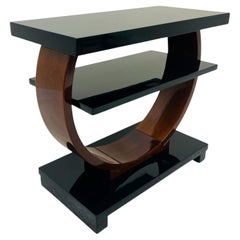
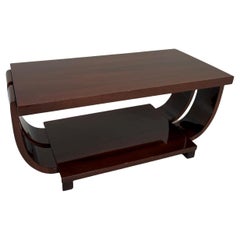
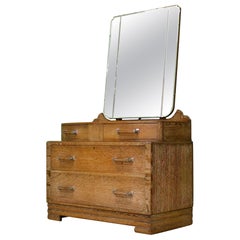
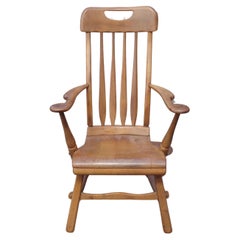

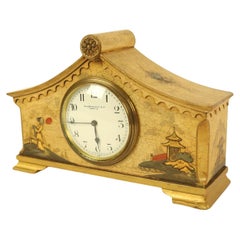
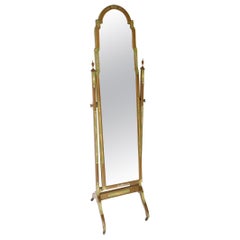
![Chinoiserie Decorated Standard Lamp circa 1930s[A] Chinoiserie Decorated Standard Lamp circa 1930s[A]](https://a.1stdibscdn.com/chinoiserie-decorated-standard-lamp-circa-1930sa-for-sale/f_81422/f_349281721687611398025/f_34928172_1687611398387_bg_processed.jpg?width=240)
![Chinoiserie Decorated Standard Lamp circa 1930s [B] Chinoiserie Decorated Standard Lamp circa 1930s [B]](https://a.1stdibscdn.com/chinoiserie-decorated-standard-lamp-circa-1930s-b-for-sale/f_81422/f_349280821687610835691/f_34928082_1687610836074_bg_processed.jpg?width=240)